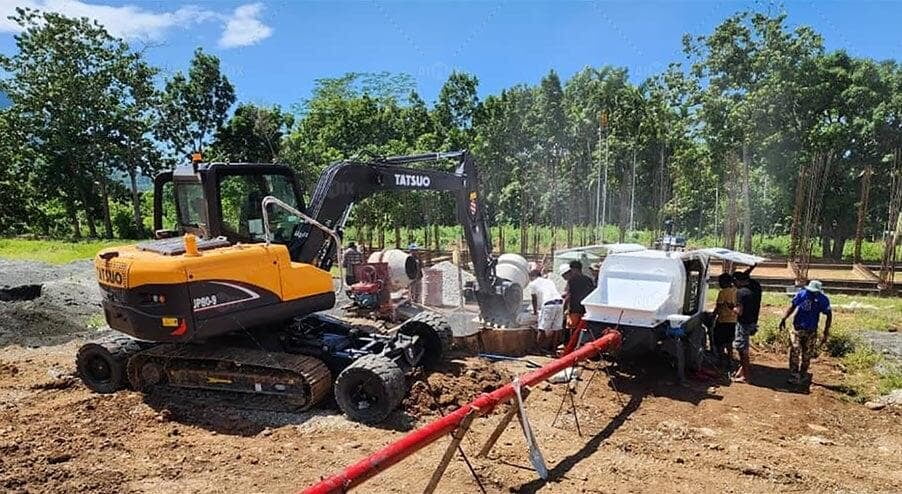In the world of large-scale infrastructure projects, precision and efficiency aren't just desirable—they're non-negotiable. Stationary concrete pumps with horizontal pumping capabilities have emerged as silent heroes in bridge and tunnel construction, offering unparalleled advantages that mobile pumps simply can't match. These powerful machines deliver concrete with surgical precision across vast horizontal distances, transforming how engineers approach complex pours in confined or elevated spaces.
Unrivaled Reach for Demanding Projects
The horizontal pumping prowess of stationary units solves one of infrastructure's greatest challenges: delivering wet concrete to hard-to-access locations. Unlike their boom-mounted counterparts, these pumps can maintain consistent pressure across distances exceeding 200 meters, making them ideal for tunnel linings or bridge deck pours where access points may be limited. Their extended reach capability allows contractors to place concrete with millimeter accuracy, even around reinforcing steel mazes or through narrow formwork channels.
What truly sets these systems apart is their ability to maintain pulse-free flow during extended horizontal placements. This eliminates the segregation and cold joints that plague conventional pumping methods, ensuring structural integrity across massive concrete placements. For projects like suspension bridge anchorages or immersed tunnel segments—where a single weak point could compromise the entire structure—this precision becomes absolutely critical.

Power Meets Precision in Confined Spaces
Tunnel construction presents unique challenges where stationary pumps shine brightest. Their compact footprint allows installation in tight shaft areas or at tunnel portals, while their high-pressure systems can push concrete through pipelines snaking hundreds of meters underground. The machines' ability to handle low-slump concrete mixes proves invaluable when creating durable tunnel linings that must withstand immense geological pressures.
Bridge builders benefit equally from these capabilities. When constructing pier foundations beneath water tables, concrete trailer pumps facilitate tremie pours with perfect consistency. Their precise pressure control prevents washout in underwater placements, while the elimination of multiple transfer points reduces the risk of material contamination. For curved bridge decks or complex abutment forms, the pumps' ability to modulate flow rates ensures complete form filling without costly overpours.
The Smart Choice for Mega-Projects
Beyond raw performance, stationary concrete pumps offer compelling operational advantages that savvy contractors increasingly prioritize. Their fixed installation allows for continuous batching integration, creating seamless concrete supply chains that keep massive pours moving without interruption. Advanced models now feature predictive pressure monitoring systems that automatically adjust to pipeline conditions, preventing costly blockages before they occur.

Durability becomes another key differentiator when working on multi-year infrastructure projects. Stationary pumps built with hardened alloy components can outlast mobile concrete pumps by thousands of operating hours, particularly when handling abrasive mixes containing fly ash or slag. Their modular design also simplifies maintenance—critical for projects where downtime translates to six-figure delays.
As infrastructure demands grow more complex, the construction industry's reliance on these horizontal pumping specialists will only intensify. Their unique combination of brute force and finesse makes them indispensable for projects where failure isn't an option—where every cubic meter of concrete must meet exacting specifications from first pour to final cure. For engineers pushing the boundaries of what's possible in bridge and tunnel construction, stationary concrete pumps have become less of a tool and more of a trusted partner in building the future.

